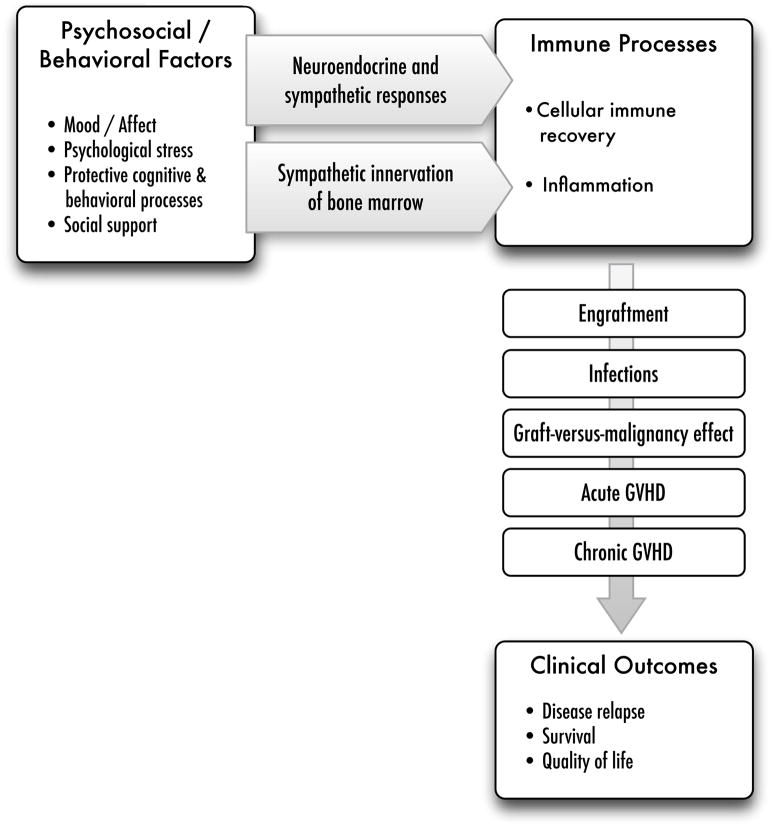Figure 1.
This biobehavioral model of HSCT illustrates the contributions of psychosocial processes and behavioral factors to recovery following HSCT. Stress-related behavioral factors can activate the HPA and SNS axes. The secreted products of these pathways (glucocorticoids, catecholamines) and the direct sympathetic innervation of the bone marrow microenvironment can modulate cell recovery following transplant and promote (or moderate) an inflammatory environment that predisposes the HSCT recipient to moderate or severe GVHD. Immune recovery plays a critical role in several different clinical events following HSCT, including preventing infections, promoting the activity of effector cells on residual disease, and mitigating acute and chronic GVHD, thereby reducing the risk for disease recurrence, ensuring survival, and facilitating a more optimal quality of life.

